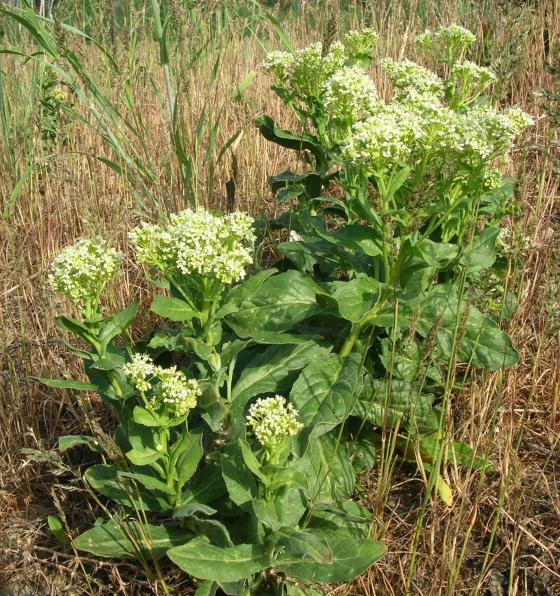
Scientific Name:Cardaria draba
Family: Brassicaceae (Mustard Family)
Other common names: hoary cress
Life-Cycle: Perennial that reproduces by seed and rhizomatous roots
Weed Guide > Whitetop

Scientific Name:Cardaria draba
Family: Brassicaceae (Mustard Family)
Other common names: hoary cress
Life-Cycle: Perennial that reproduces by seed and rhizomatous roots
| Description | Bloom (varies by elevation) |
What to Do | When? | Invades Undisturbed Land | State Class |
|---|---|---|---|---|---|
| 8-20" tall on an upright stalk with dense clusters of flowers. Leaves somewhat hairy, large and lance-shaped. Can cover large areas. | Clusters of small white flowers bloom in May & June. Flowers have 4 petals in a cross shape. | Aggressively treat new populations. Repeatedly handpull small populations; consider herbicides and competing vegetation. | April-May when ground is wet, before it goes to seed. | Yes! Colonizes a variety of habitats but tends to prefer moist soil. Rapidly expanding in the Methow. | C |
See the whole “Toolbox of Weed Control Methods” for more details.